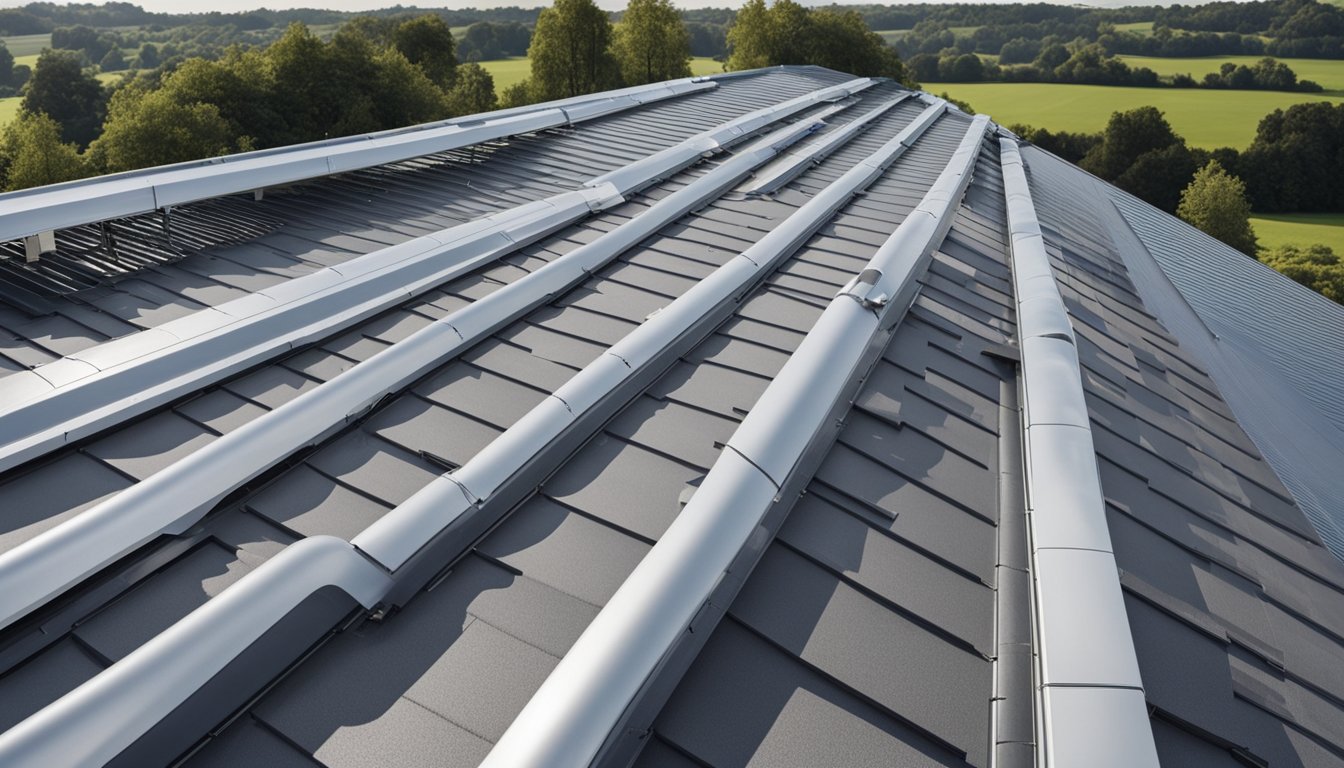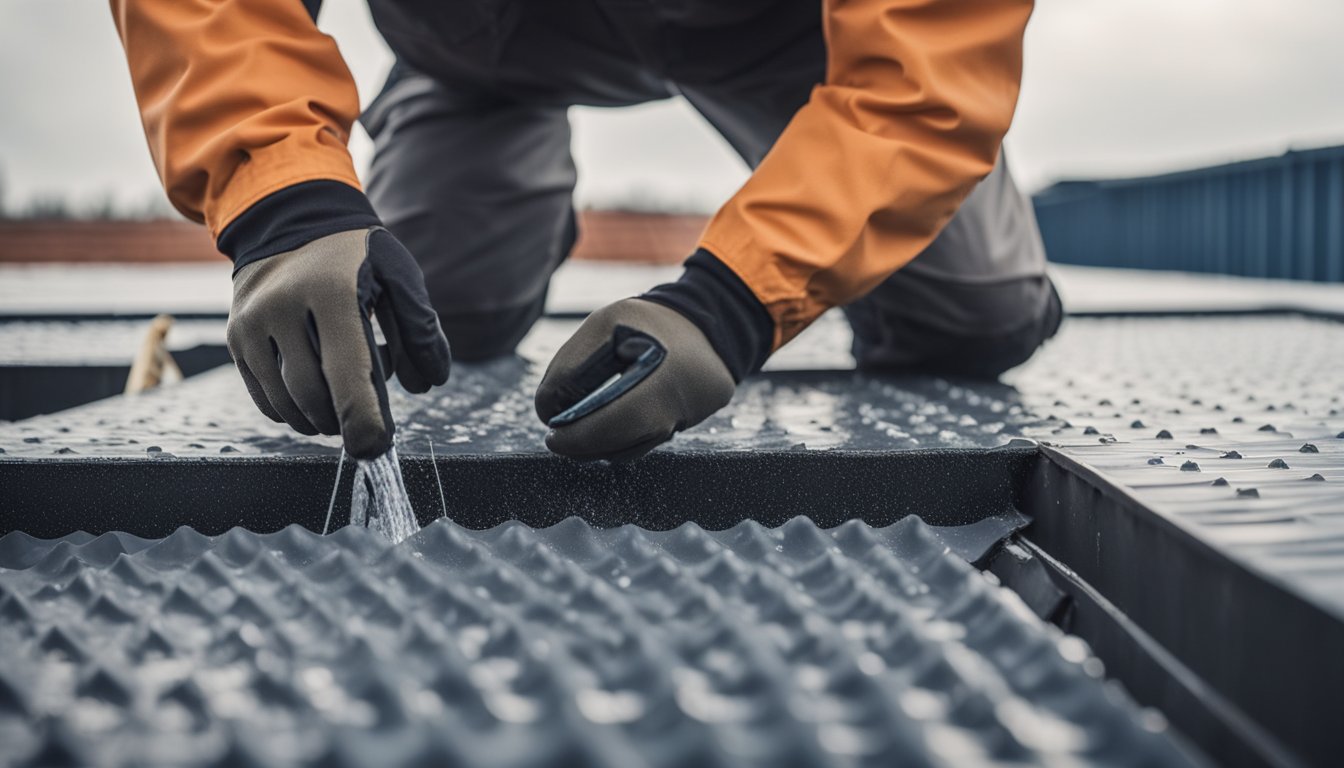Late updated: 01 Oct 2024 09:10
Written by: Oliver Bennett
Advancements In UK Roof Waterproofing Techniques: Innovations and Trends
Navigating the evolving landscape of roofing and waterproofing in the UK offers us a unique glimpse into the dynamic intersection of tradition and innovation. Recent advancements have not only provided more effective solutions for weatherproofing structures but have also introduced eco-friendly practices that align with modern sustainability goals. Incorporating cutting-edge materials and techniques significantly enhances the durability and performance of roofs in the UK's challenging climate.

Understanding the significance of these advancements involves considering both the technological innovations and regulatory standards that shape modern roofing practices. As we explore new materials that offer self-healing and energy-efficient properties, it's crucial to align with UK building regulations and British standards. This ensures both the integrity of our structures and compliance with environmental objectives.
In this article, we'll delve into recent innovations and trends in UK roof waterproofing. Our journey through these advancements will reveal not only technical improvements but also how they contribute to long-term sustainability in construction. Join us as we uncover how these changes are transforming our approach to building resilient structures.
Key Takeaways
- Innovations enhance roof durability in challenging climates.
- Compliance with UK standards ensures structural integrity.
- Sustainable practices align with environmental goals.
Modern Roofing Materials and Techniques
In recent years, roofing materials and techniques have evolved significantly in the UK. We've seen noteworthy advancements in waterproofing membranes, liquid roofing systems, and reflective coatings. These innovations focus on durability, energy efficiency, and ease of installation, providing a comprehensive solution to modern roofing needs.
Advances in Waterproofing Membranes
Waterproofing membranes have come a long way from traditional options. Reinforced bitumen membranes are now preferred for their robust performance and longevity. They offer superior resistance to UV degradation and extreme weather conditions, which makes them ideal for the UK climate.
Modern membranes often incorporate nanotechnology, enhancing their flexibility and adhesion properties. This innovation significantly reduces the risk of leaks and maintenance requirements. Installation has also become more efficient, as newer membranes are often lightweight and come with self-adhesive properties, simplifying the application process.
Innovative Application of Liquid Roofing Systems
Liquid roofing systems have transformed how we approach flat roof waterproofing. These systems use liquid waterproofing materials, applied directly to the roof surface, creating a seamless and flexible membrane. This approach eliminates the vulnerabilities associated with traditional seams or joints.
Liquid roofing techniques excel in versatility, making them suitable for various substrates and structures. They can be quickly applied, even in areas with complex architectural details, minimising disruption. Furthermore, the material often includes rapid-curing properties, allowing quicker project completion. This innovation offers a highly durable and weather-resistant finish, extending the roof's life span.
Enhancing Energy Efficiency through Reflective Coatings
Reflective coatings have become an essential component of energy-efficient roofing solutions. By reflecting a significant portion of solar radiation, these coatings help reduce heat absorption, thus lowering cooling costs. This is particularly beneficial in urban areas where heat islands contribute to increased energy consumption.
We have access to a wide range of roofing materials that integrate reflective elements. These coatings not only enhance energy efficiency but also provide additional protection against UV damage, thereby extending the durability of the roof. Installation is straightforward, often involving a simple spraying or rolling process, making it a cost-effective option for roofs of all shapes and sizes.
Sustainability and Compliance in Roofing

In roofing, integrating sustainability and ensuring compliance with regulations are crucial steps towards improved environmental impact and building durability. Our focus is on effective design strategies, material longevity, and adherence to UK building standards.
Incorporating Green Roofs into Design
Green roofs offer significant advantages in sustainability. By integrating vegetation onto flat roofs, we enhance thermal performance and stormwater management. These designs improve drainage and lessen the environmental impact by reducing urban heat and conserving energy.
Our design guide encourages the use of waterproofing membranes to ensure the integrity of green roofs. This includes layers that both support growth and provide sealing against water damage. Collaborating with specifiers and technical committees, we can determine the best practices for incorporating these sustainable features.
Ensuring Durability and Maintenance
The longevity of roofing systems depends heavily on durability and proactive maintenance. Regular inspection and cleaning prevent water damage and extend lifespan. For flat roofs, using durable materials such as mastic asphalt can enhance resistance to harsh weather.
Effective maintenance routines should include checking drainage systems and the condition of waterproofing membranes. This allows us to identify any weak points early and ensures consistent performance. A strategic maintenance plan, supported by appropriate sealing techniques, helps in mitigating environmental wear and reducing repair costs.
Navigating UK Building Regulations and Standards
Adhering to UK building regulations and standards is vital for compliance in roofing projects. Regulations cover fire safety, structural integrity, and environmental considerations. Our knowledge of these regulations, including the NHBC standards and the GRO Green Roof Code, guides us in making informed decisions.
Building projects require attention to detail in material selection and design to meet these standards. We ensure every project complies with the best practice codes to achieve optimum safety and performance. Staying informed about updates to regulations helps us incorporate the latest safety and efficiency improvements in our roofing solutions.
Frequently Asked Questions

In the evolving field of roof waterproofing, there are significant advancements in materials and methods. We examine these innovations, their effectiveness, and how they cater to the UK's unique weather challenges while addressing sustainable practices.
What are the emerging innovations in roof waterproofing solutions?
Emerging innovations have introduced advanced roof coatings and membranes that enhance durability and resistance to weather extremes. Smart waterproofing solutions also include self-healing materials that automatically repair minor damages, which could lead to leaks if left untreated.
Which waterproofing methods are currently most effective for roofs in the UK?
In the UK, roofing membranes and liquid coatings are among the most effective methods. These solutions are specifically designed to provide seamless coverage, ensuring minimal risk of leaks. Their flexibility allows them to adapt to roof movements caused by temperature fluctuations.
How have new technologies improved the longevity and efficacy of roof waterproofing?
New technologies, such as reinforced polymers and nanotechnology-enhanced coatings, have significantly extended the lifespan of waterproofing solutions. These innovations ensure superior protection against wear and tear, offering greater efficacy in maintaining a watertight seal.
What are the superior waterproofing techniques suitable for UK weather conditions?
Considering the UK's diverse climate, techniques like built-up roofing and single-ply membranes are optimal. These methods ensure robust protection against wind and rain, providing reliable waterproofing in various weather scenarios.
How do advanced waterproofing materials compare to traditional methods in terms of performance?
Advanced waterproofing materials, such as EPDM and TPO membranes, outperform traditional materials like asphalt in terms of flexibility and durability. These modern materials offer greater resistance to UV degradation and temperature changes, enhancing overall performance.
In what ways has the waterproofing industry adapted to environmental and sustainability concerns?
The industry has shifted towards eco-friendly options, including the use of recycled materials and the development of biodegradable coatings. This reflects a growing commitment to sustainability, minimising environmental impact while maintaining high performance in waterproofing solutions.
